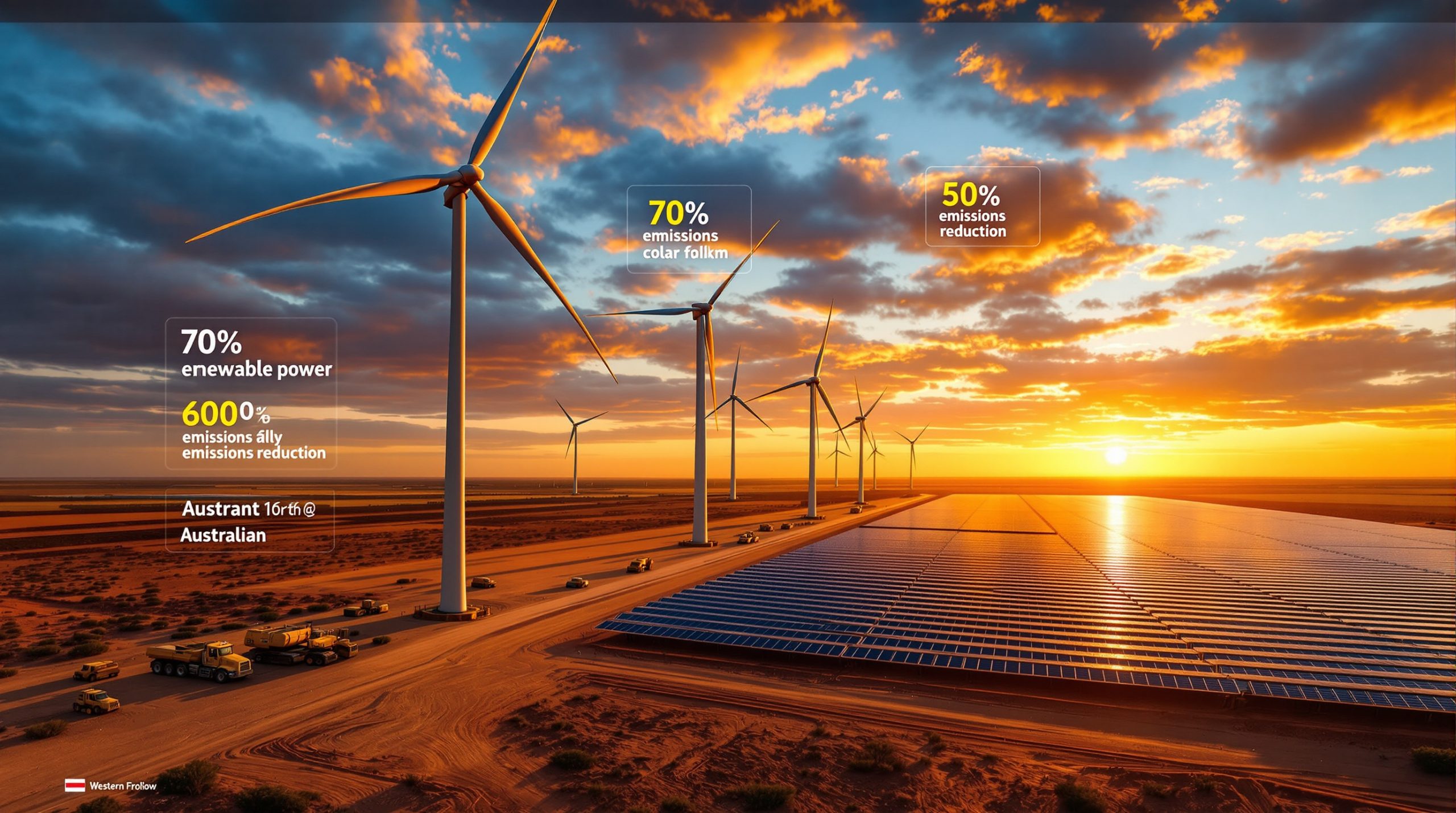The Unexpected Early Restart and Market Shockwaves
When Chinese battery giant CATL suspended operations at its Jianxiawo lithium mine in August 2025, the market response was immediate and dramatic. The closure, initially expected to last three months due to expired mining permits process, triggered a 24% surge in lithium carbonate prices across China—jumping from approximately RMB 70,000 to RMB 86,500 per ton.
This price spike reflected widespread concern about potential supply constraints in the electric vehicle battery materials sector, especially considering CATL's position as the world's largest battery manufacturer controlling approximately 37% of the global EV battery market as of 2023, according to SNE Research data.
How Did CATL's Mine Closure Initially Affect Lithium Markets?
The initial shutdown created significant ripple effects throughout global lithium supply chains. China's role as both producer (13% of global lithium) and processor (over 60% of world's lithium) meant that any disruption at a major mine like Jianxiawo would have outsized impacts on global lithium market trends.
The price volatility demonstrated the lithium market's continuing maturation challenges, with limited market depth and concentrated production sources amplifying what might otherwise be considered a relatively modest supply disruption.
Why Has the Early Restart Surprised Investors?
The unexpected announcement on September 10, 2025, that CATL would resume operations after just 30 days—rather than the anticipated three months—caught market participants completely off-guard. Most traders had positioned themselves for a longer-term supply disruption, creating a momentum trade that has now dramatically reversed.
CATL has reportedly successfully renewed all necessary mining rights certificates and permits under China's revised Mining Law, which requires multiple authorizations including safety production licenses and environmental impact assessments. The rapid approval process suggests high-level prioritization of keeping this strategic resource in production.
What Immediate Market Reaction Followed the Restart Announcement?
The immediate market response has been severe, particularly for Australian lithium producers:
| Company | Price Change (Sept 10, 2025) | Share Price |
|---|---|---|
| Liontown Resources | -17.4% | 78.5 cents |
| Pilbara Minerals | -15.4% | $2.03 |
| IGO Ltd | -13.5% | $4.14 |
| Wildcat Resources | -13.0% | 18 cents |
This rapid selloff demonstrates how the market had prematurely priced in a longer-term supply disruption, creating a momentum trade that has now dramatically reversed. The severity of the reaction highlights the still-developing nature of lithium as a tradable commodity, where information asymmetry and limited market depth can create exaggerated price movements.
Understanding Jianxiawo's True Market Significance
Despite the market's dramatic reaction to both the closure and restart, perspective is essential when evaluating Jianxiawo's actual importance to global lithium supply fundamentals.
How Significant Is the Jianxiawo Mine to Global Supply?
The Jianxiawo mine represents only 3-5% of global lithium supply—a relatively modest contribution compared to major Australian operations that collectively account for over 50% of global production. This highlights how market sentiment and momentum trading can drive disproportionate price movements compared to fundamental supply-demand dynamics.
For context, Australia produced approximately 86,000 tonnes of lithium in 2023 from its hard rock spodumene operations, according to the Australian Department of Industry, Science and Resources. The top lithium-producing countries in 2023 were Australia (52%), Chile (24%), China (13%), Argentina (6%), and Zimbabwe (2%), per U.S. Geological Survey data.
What Does CATL's Regulatory Compliance Process Reveal?
The rapid permit renewal process suggests CATL has effectively navigated China's increasingly stringent mining regulations. Chinese mining operations typically require 2-4 weeks to restart after temporary shutdowns, depending on equipment maintenance needs and workforce mobilization.
The company's ability to expedite the regulatory compliance process—including recalling frontline workers and preparing for full production resumption—demonstrates both its political influence and operational efficiency within China's critical minerals strategy sector.
How Does This Restart Fit Into China's Broader Lithium Strategy?
The Chinese government's apparent prioritization of quickly returning this domestic lithium source to production aligns with national strategic interests in maintaining control over critical battery supply chains. China's critical minerals strategy emphasizes domestic resource development to reduce import dependency while maintaining its dominant position in battery manufacturing.
The speed of regulatory approval suggests authorities recognize the importance of maintaining stable domestic lithium production capacity amid growing global competition for battery materials, particularly as demand projections show lithium needs increasing from 500,000 tonnes LCE in 2022 to over 3 million tonnes by 2030, according to International Energy Agency forecasts.
Broader Market Implications
The Jianxiawo mine restart illuminates several important aspects of the global lithium market structure that investors should carefully consider.
What Does This Event Reveal About Lithium Market Volatility?
The dramatic price swings triggered by a single mine's operational status highlight the lithium market downturn challenges. Unlike more established commodity markets with deeper liquidity and diverse supply sources, lithium remains susceptible to outsized reactions from relatively minor supply disruptions.
Historical data shows lithium carbonate prices have demonstrated extreme volatility in recent years, ranging from under $10,000/tonne in 2020 to peaks above $80,000/tonne in 2022, according to Benchmark Mineral Intelligence. This volatility creates both risks and opportunities for investors who understand the true supply fundamentals.
How Are Different Types of Lithium Companies Affected?
The market reaction has been most severe for pure-play lithium producers with direct exposure to spot market pricing. Australian lithium companies have been particularly vulnerable:
- Pure-play producers (like Pilbara Minerals) face the most direct exposure to price fluctuations
- Diversified miners (like IGO) experience significant but somewhat moderated impacts due to their broader commodity portfolio
- Companies with long-term offtake agreements at fixed prices enjoy partial insulation from immediate price volatility
The lithium market remains highly concentrated, with the top 6 producers controlling approximately 77% of global supply, according to McKinsey & Company research from 2023. This concentration amplifies the impact of production changes at any major operation.
What Lessons Should Investors Take From This Market Episode?
This event underscores the importance of understanding true supply fundamentals rather than following momentum-driven market narratives. The initial closure triggered what appears to have been an overreaction based on exaggerated supply disruption expectations, while the current selloff may similarly overshoot fundamental market realities.
Investors should recognize that information asymmetry regarding Chinese mining operations creates additional challenges. Language barriers and regulatory opacity often mean international investors lack real-time information about operational changes, creating advantages for better-informed market participants.
Future Outlook and Strategic Considerations
Looking ahead, the Jianxiawo mine restart has several important implications for both the near-term lithium market and longer-term strategic positioning.
How Might This Affect Lithium Price Forecasts for Late 2025?
The premature restart of Jianxiawo will likely exert downward pressure on lithium prices through the remainder of 2025, potentially accelerating the market's rebalancing process. Analysts may need to revise previous price forecasts that had incorporated a longer-term supply disruption from this operation.
However, this adjustment should be viewed within the context of robust long-term demand growth. Global EV sales are projected to reach 30 million units by 2030, requiring approximately 2.4 million tonnes of lithium carbonate equivalent, according to BloombergNEF's "Electric Vehicle Outlook 2023." This fundamental demand growth remains the dominant long-term market driver.
What Does This Mean for Australian Lithium Project Development?
For Australian lithium producers already facing challenging market conditions, this additional supply pressure could further complicate investment decisions for expansion projects or new developments. Companies may need to reassess production costs and breakeven points in light of potentially lower price expectations.
Australian spodumene operations generally have higher operating costs ($3,000-$7,000/tonne LCE) compared to South American brine operations ($2,000-$5,000/tonne LCE). This cost structure means Australian producers must carefully evaluate project economics against realistic long-term price assumptions, typically requiring $15,000-$20,000/tonne LCE for new hard rock operations to achieve feasibility.
How Should Investors Position for Future Lithium Market Developments?
Investors may want to focus on companies with lower production costs, stronger balance sheets, and diversified revenue streams that can weather continued price volatility. The episode highlights the value of understanding technical supply fundamentals rather than reacting to market momentum or sentiment-driven price movements.
Key factors to consider include:
- Cost position on the global supply curve
- Balance sheet strength to withstand price volatility
- Project development timeline relative to projected market needs
- Offtake agreement structures that provide price stability
- Technical expertise in efficiently extracting and processing lithium
Understanding these fundamentals provides a stronger basis for investment decisions than following short-term price movements or market sentiment alone.
Case Study: The Overreaction Phenomenon in Specialty Minerals
The Jianxiawo situation provides an instructive case study in how specialty mineral markets like lithium can experience exaggerated price movements compared to actual supply changes.
Why Did Markets Overreact to Both the Closure and Restart?
The disproportionate market response to Jianxiawo's operational changes exemplifies how specialty mineral markets can experience magnified price volatility due to:
- Limited market depth and liquidity
- Concentrated production in few geographic regions
- Relatively opaque supply chains
- Growing but still developing market intelligence capabilities
- Momentum trading amplifying fundamental signals
These structural characteristics create conditions where even modest supply changes can trigger outsized market reactions, particularly when traders position themselves based on momentum rather than fundamental analysis.
What Similar Historical Precedents Exist in Lithium Markets?
This isn't the first time lithium markets have demonstrated such volatility. Similar patterns emerged during:
- Rare earth elements crisis (2010-2011): When China restricted exports, prices surged before eventually normalizing
- Cobalt market disruption (2017-2018): Political instability in the Democratic Republic of Congo created supply uncertainty and price volatility
- Weather-related disruptions in South American brine operations: Previous rainfall events affecting lithium extraction have triggered similar temporary price spikes
These historical examples demonstrate that specialty mineral markets frequently experience temporary but severe price dislocations that later revert to fundamentally-driven levels.
How Does Information Asymmetry Contribute to Market Volatility?
The gap between initial market expectations (three-month closure) and reality (one-month closure) highlights the information challenges facing international investors in Chinese mining operations. This information asymmetry creates opportunities for better-informed market participants while increasing risks for those relying on incomplete public information.
International investors often face several disadvantages when assessing Chinese mining operations:
- Language barriers limiting access to local regulatory announcements
- Regulatory opacity regarding permit renewal timelines
- Limited on-the-ground intelligence about operational status
- Complex supply chain relationships that obscure production impacts
These information challenges contribute to market inefficiencies that can create both risks and opportunities for investors.
FAQ: Key Questions About the Jianxiawo Mine Restart
What Caused the Initial Shutdown of Jianxiawo Mine?
The mine was temporarily closed in August 2025 due to expired mining permits, reflecting China's increasing regulatory oversight of its domestic mining sector and stricter enforcement of environmental and safety standards. Chinese mining operations require multiple permits including mining rights certificates, safety production licenses, and environmental impact assessments under China's revised Mining Law.
How Quickly Can the Mine Return to Full Production?
Based on CATL's announcements, the company has already begun recalling workers and preparing for restart operations. Full production capacity could be achieved within weeks rather than months, depending on how quickly equipment can be recommissioned and operational workflows reestablished. Typically, large-scale lithium operations require 2-4 weeks to restart after temporary shutdowns, depending on equipment maintenance needs.
Will This Restart Permanently Affect Lithium Price Trends?
While the immediate market reaction has been severe, the fundamental supply-demand balance for lithium remains tight over the medium term. This restart may temporarily suppress prices but is unlikely to fundamentally alter longer-term market dynamics driven by growing electric vehicle adoption.
Global lithium demand is projected to increase from 500,000 tonnes LCE in 2022 to over 3 million tonnes by 2030, according to International Energy Agency forecasts. This substantial growth trajectory means short-term supply fluctuations will likely have diminishing importance against the backdrop of structural demand growth.
How Might This Affect Investment in New Lithium Projects?
The increased price volatility could make financing more challenging for new lithium projects, particularly those with higher production costs. Investors may demand higher risk premiums or more conservative price assumptions when evaluating project economics.
Lithium project feasibility typically requires long-term price assumptions of $15,000-$20,000/tonne LCE for new hard rock operations. More volatile price environments may lead financial institutions to apply more conservative valuation methodologies, potentially delaying capital formation for new supply development.
What Does This Reveal About China's Control of Critical Minerals?
The episode underscores China's continued dominance in critical mineral supply chains and its ability to influence global markets through domestic regulatory decisions. The rapid permit renewal process suggests prioritization of maintaining production capacity in strategically important minerals.
China's critical minerals strategy emphasizes both domestic resource development and international acquisition to secure supply chain control. The country processes over 60% of the world's lithium despite producing only 13% of the raw material, according to U.S. Geological Survey data from 2024, demonstrating its strategic focus on maintaining dominance in battery supply chains.
Investor Takeaways and Market Navigation Strategy
The CATL Jianxiawo lithium mine restart demonstrates the importance of maintaining perspective amid lithium market volatility. Despite dramatic price swings, investors should focus on fundamental supply-demand dynamics rather than short-term price movements.
Key principles for navigating this evolving market include:
- Look beyond headlines to understand actual supply impacts relative to market size
- Differentiate between temporary price dislocations and structural market shifts
- Consider cost positions when evaluating producer resilience to price volatility
- Recognize information asymmetry challenges when assessing Chinese operations
- Maintain long-term perspective on fundamental demand growth from electrification
The lithium market continues to mature, with each supply disruption and price dislocation providing valuable lessons for investors seeking to participate in the energy transition materials sector. Australia's ongoing investment in Australia lithium innovations will be crucial for maintaining its competitive position despite these market challenges.
Disclaimer: This article contains forward-looking statements and market analysis based on current information. Future events and market conditions may differ significantly from projections. Readers should conduct their own research and consult financial advisors before making investment decisions.
Ready to Capitalise on the Next Major Lithium Market Swing?
Stay one step ahead of lithium market volatility with real-time alerts on significant ASX mineral discoveries, powered by Discovery Alert's proprietary Discovery IQ model. Visit our discoveries page to understand how major mineral announcements can generate substantial returns for informed investors.




